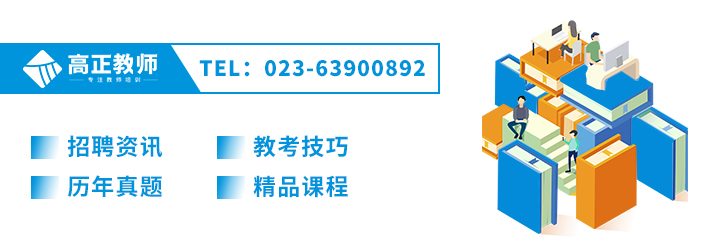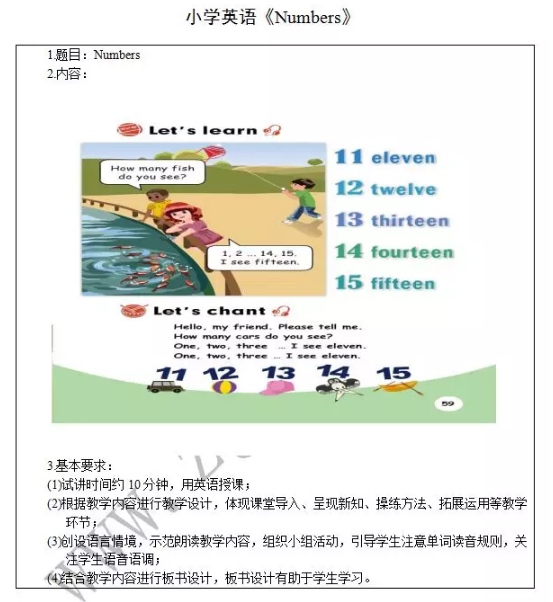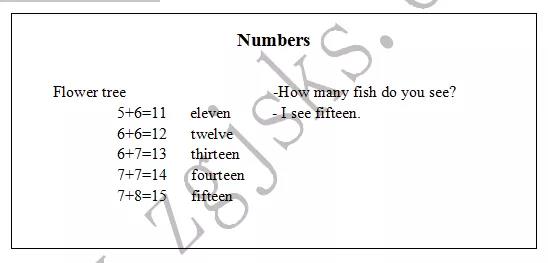

Numbers
Teaching Plan
I Teaching Aims
Knowledge aims
1.Students can learn the meaning and pronunciation of the words: “eleven”,“twelve”, “thirteen”, “fourteen” and “fifteen”.
2. Students can learn the sentence structure: “How many fish do you see?/I see fifteen.”.
Ability aim
Students can use the words and sentence structure in their daily communication.
Emotional aim
Students will be more interested in learning English.
II Teaching Key &Difficult Points
Key point: the words: eleven, twelve, thirteen fourteen and fifteen and the sentence structure;
Difficult point: How to teach students the pronunciation of the word “thirteen”.
III Teaching procedures:
Step 1: Warming up
Sing a song named Once I caught a fish alive together with the students :
This old man, he played one,
He played knick-knack on my thumb
With a knick-knack paddywhack, Give a dog a bone
This old man came rolling home.
This old man, he played two
He played knick-knack on my shoe
With a knick-knack paddywhack, Give a dog a bone
This old man came rolling home.
Then ask students to count out the numbers mentioned in the song.
Step 2: Presentation
1. Present the words and teach.
Tell the students that suppose we are having a math class. They need to do those math tests and find the new numbers. Teacher show the words and read them.
2. Present the sentence.
Divide students into groups to listen to the tape and answer question.
-How many fish do you see?
-I see fifteen.
Step 3: Practice
1. Show the pictures which are in the next part(let’s chant). And then make new conversation according to the sentence structure and new things.
Step 4: Production
Do this chant and ask students to make new chants.
Step 5: Summary & Homework
Summary: Teacher summarize the class.
Homework: Ask students to tell their parents what they have learned in school today and write those new numbers.
IV Blackboard design

【结构化问题】
朱熹的《观书有感》中说到“问渠哪得清如许,为有源头活水来”,请谈谈对你的启示。
【参考答案】
“问渠哪得清如许,为有源头活水来”这句古诗被人们用来比喻不断学习新知识,才能达到新境界。因此,对于教师工作而言,我认为活水指的就是新的思想和理念以及新的教育教学方式和新的知识技能等。而教师要想不断注入活水,必须牢记“活到老,学到老”的理念。
第一,自我学习。教师可以通过阅读来增长自己的知识,也可以通过网络平台,快速、高效地学习知识技能以及他人分享的教育教学经验,还可以通过熟知教育部的教育纲领,更新自己的教育理念。
第二,向他人学习。教师可以向周围的优秀骨干、先进代表等学习他们的事迹精髓,领略他们的教育教学宗旨,借鉴他们的教育教学方式。
第三,参加专业化的培训。教师可以参加新课程、新教材或者教法的培训等,通过系统化的学习,掌握新理念和新技能。
第四,参加实践活动。在实践活动中,可以及时获得关于教育教学方面的最新信息和动态,并可以借鉴和学习其他优秀教师的教育经验。比如,通过参加学术交流活动,可以向教育专家和同行请教学习,反思并改进自己的不足;通过参加教育观摩活动,可以学习其他学校的教育教学理念,借鉴其他教师的优秀之处。
如果我能成为一名教师,我一定会注重新理念、新知识与新技能的获得,努力为学生源源不断地提供知识。
我的问题回答完毕,谢谢!
高正教师公招考试在线交流QQ群:1043300897
微信公众号订阅:重庆市教师招聘网(cqjsgz)













